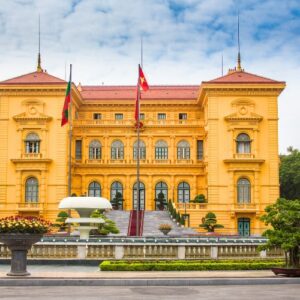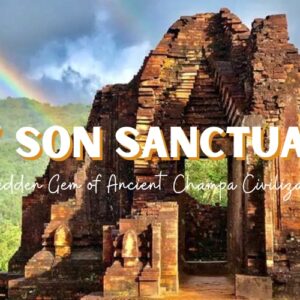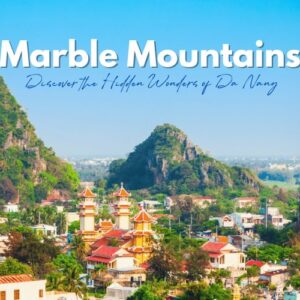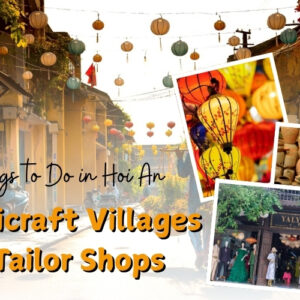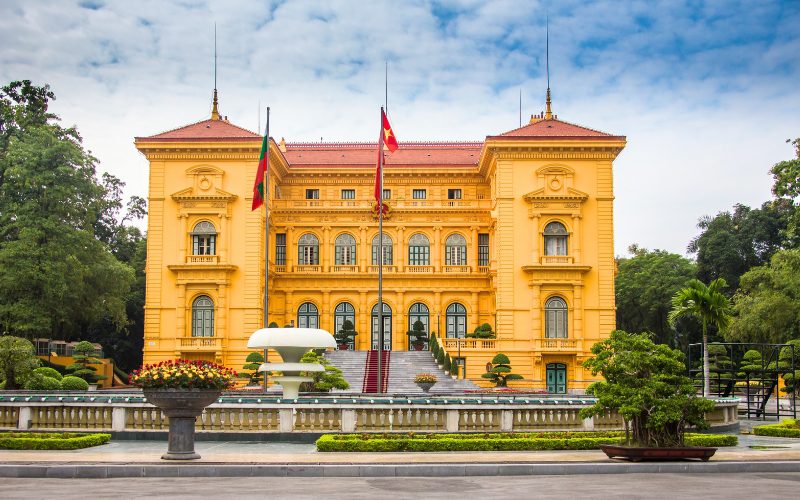
As you are planning to visit Hanoi, don’t miss the Presidential Palace, a legacy of Vietnamese history and culture. The magnificent yellow French-style building, also known as The Palace of the French Governor-General of Indochina, was built in 1906 and now is the location for the official receptions.
Not just a precious asset of the country’s history and culture, as part of the Ho Chi Minh Complex Relic, here you can also learn more about Uncle Ho, the great leader of Vietnam, be amazed by the elegant designs of the building, and visit the lush garden, an orchard, a long boulevard, and a carp pond. This majestic building is a place that you won’t want to pass when traveling to Vietnam.
History of The Presidential Palace
As mentioned above, the palace was originally built for the Governor-General of France in Indochina, the building progress took about 7 years to complete. After the Revolution for Independence in 1945, it was named the Presidential Palace.
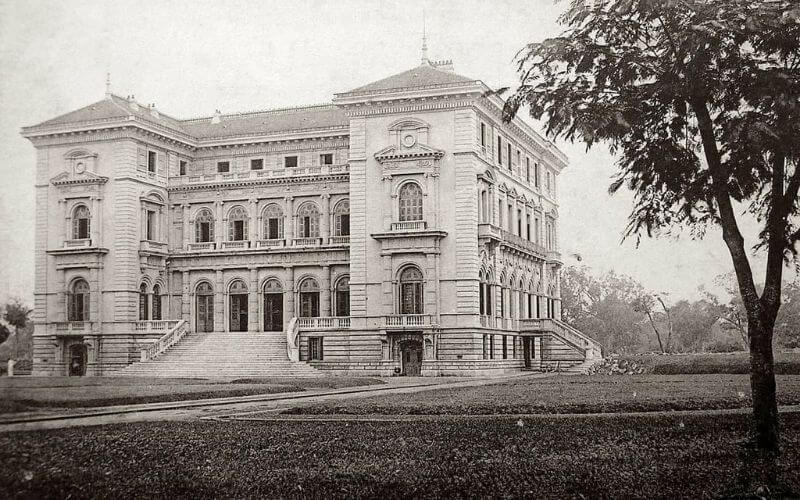
The Palace of The Governor-General of Indochina
After independence, Ho Chi Minh President was asked to move in, but he refused and stay in a silt house which you will see while discovering Ho Chi Minh Complex Relic. At the time, the palace was only used for meetings with foreign officials and for President Ho to visit the young children.
Nowadays, the Presidential Palace is where to meet and welcome important guests and foreign national officials on business to Vietnam.
Highlights of The Presidential Palace
Built during the French colonial period, the building has no signs of Asian architectural features. The French want to spread European civilization as much as they could, and they believed that European architecture is much better than Asian’s. The building spans an area of nearly 1300 square meters, 3 stories high with 30 rooms, each room was designed differently. The first floor consists of many serving rooms. The second floor has a guest hall, office spaces, and a banquet hall. On the third floor are private rooms where the French Governor-general of Indochina lived before 1954.
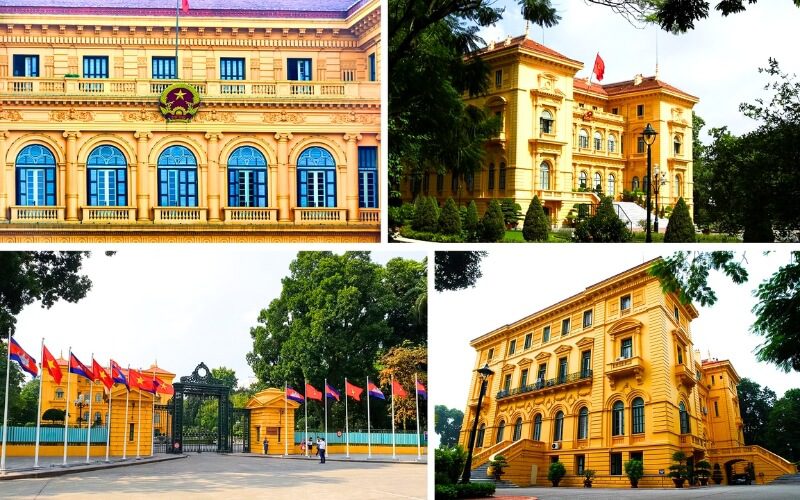
Highlights of the Presidential Palace
Stands amidst a large courtyard, the building is separated from the outside streets by iron fences and big gates. The modern architectural features are inspired by the Renaissance and Beaux-Art styles. An example you can spot out, it was built symmetrically, with a big block in the center and two blocks on both sides.
Presidential Palace’s Nearby Attractions
The palace is located in the heart of the capital, so traveling between the palace and the other attractions will be very convenient and easy.
Ho Chi Minh Mausoleum
Built over 2 years from 1973 to 1975, this building was the result of collaboration between Vietnam and Xo Viet Union engineers. Ho Chi Minh Mausoleum has 3 floors and the second floor is the heart of it. This is where the remains of President Ho are kept in a chamber, accessible through a lot of passages and marble stairs. The Mausoleum is free to visit, but you need to remember to dress politely, no short skirts, tank tops, or hats, phones, and cameras are also not allowed inside the Mausoleum, you will need to leave them outside. During the visit, visitors need to walk slowly and quietly in 2 lines.
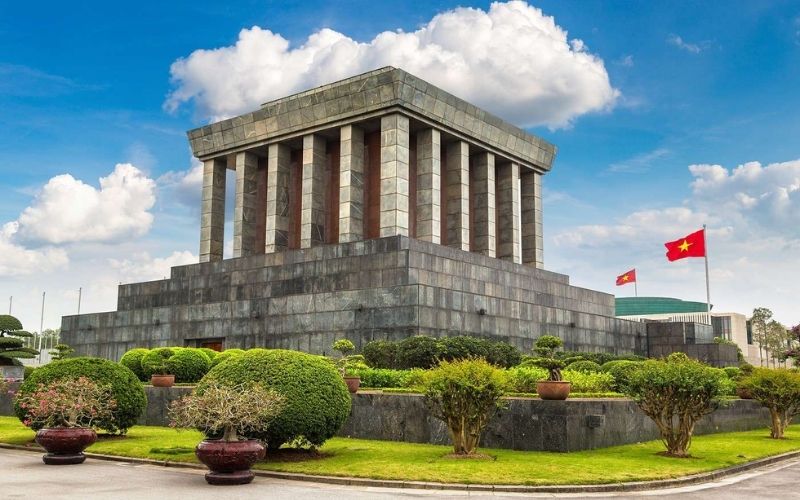
Ho Chi Minh Mausoleum
Ba Dinh Square
Ba Dinh means “Three Communal House” and originally was the name of a village in Thanh Hoa province, where the first revolution against French colonialists took place. Vietnam’s largest square is 320 meters in length, and 100 meters in width and has a capacity of 20 thousand people and a flag tower 29 meters high. The square is where many historical events in Vietnam took place. Today, it is the location for many national meetings, and the annual military parade celebrating Vietnam’s Independence Day. Every day there are flag-raising and lowering ceremonies solemnly take place under the formal national rites.
Ho Chi Minh President’s Stilt House
Behind the Palace is the wooden house where President Ho used to live. The house has 2 floors, the first floor is where he used to receive guests and the second floor with 2 rooms, where he worked and where he slept. The furniture inside is kept as when the great president used to, there is nothing much, just simple and neat. Visiting the house, you can understand more about the simple living style of the beloved Ho Chi Minh President.
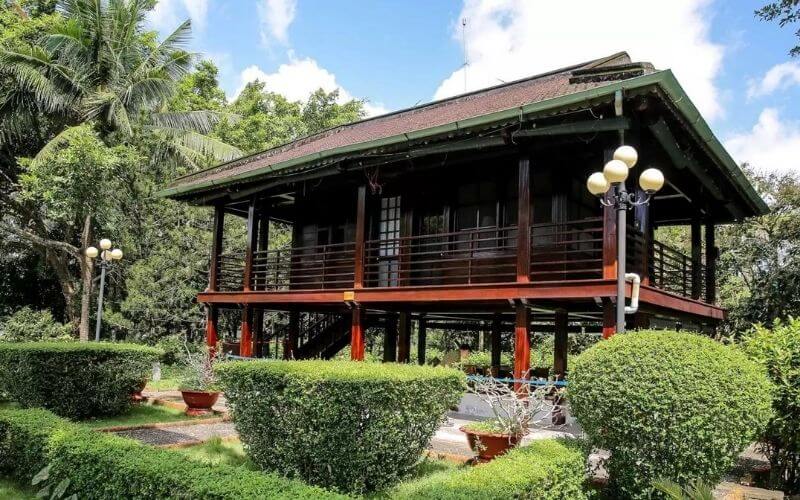
Ho Chi Minh Stilt House
House No. 54
This is where Ho Chi Minh President used to live and work between December 1954 and May 1958. The house has 3 rooms, one near the pond for his study room and receiving guests, the dining room in the middle and then his sleeping chamber. Come inside you can see all the documents, furniture, and souvenirs from his international friends still kept intact as they were when he lived here.
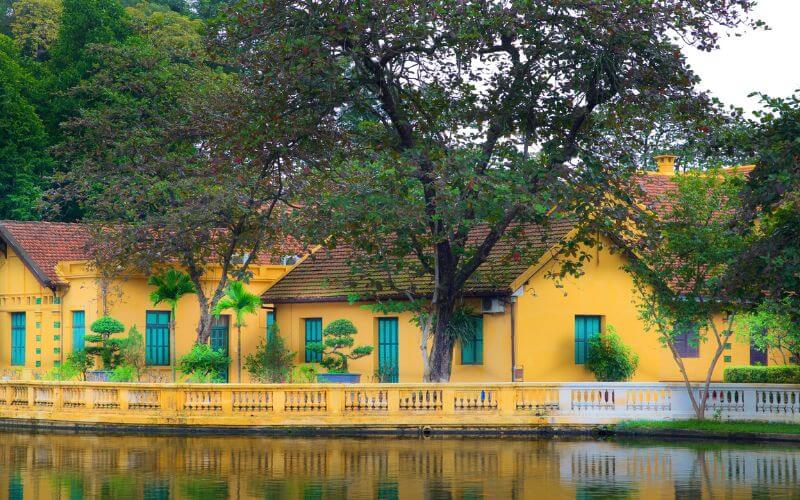
House 54
House No. 67
House 67 is a light green house behind the wooden stilt house, it was where Uncle Ho worked from 1967 to 1969, it was also where he was treated and died. The house was built to ensure safety for Uncle Ho when the American Empire expanded and attacked Northern Vietnam. During that time, it was used for meetings between Ho Chi Minh and his comrades, the leading officials, to discuss important matters in the country. Now, inside the house is displaying military maps and a ZENITH radio, the clock, and a wall calendar, frozen at Uncle Ho’s absence on September 2, 1969, at 9:47 minutes.
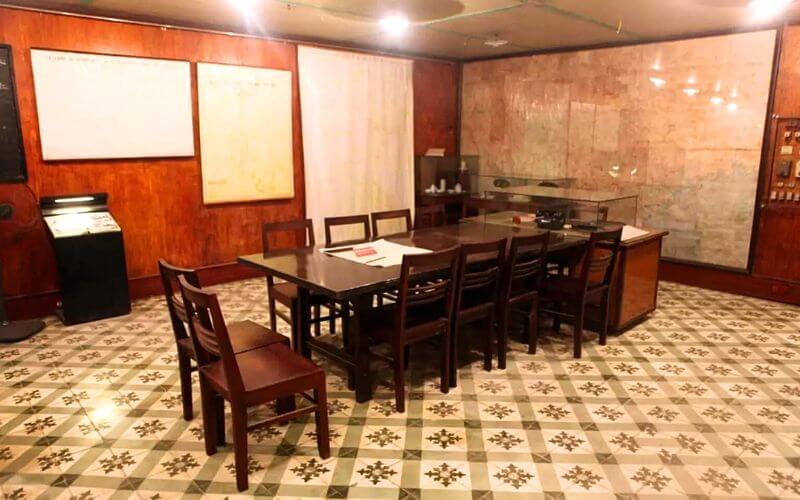
House 67
One Pillar Pagoda
One Pillar Pagoda is one of the most sacred temples in Vietnam with a unique Buddhism structure. The pagoda is inspired by the shape of a lotus. The story told that King Ly Thanh Tong dreamt of the Buddhist Bodhisattva Avalokiteśvara sitting on a lotus and lead him to a temple with the shape of a lotus. He was then advised to build a temple and worship the goddess as a lotus-like. A part of the original complex was destroyed during the wars of the previous periods. The pagoda now is restored from what was left by the Nguyen Dynasty. The pagoda worships the Buddhist Goddess and is open freely to anyone who wants to pay a visit.

One Pillar Pagoda – Hanoi
Temple of Literature
Also known as “Van Mieu Quoc Tu Giam”, it is the first university in Vietnam, built-in 1070 by King Ly Thanh Tong. The structures are restored and kept the same as they used to be in the past. Here you can discover ancient construction dating back to the Ly and Tran dynasties, such as the Khue Van Pavilion, an icon of Hanoi, and the system of 82 stone steales on the turtles’ backs, which inscribe names, places of birth, and achievements who passed the exams from 1442 to 1779. Coming to Hanoi in the first months of the year or in early/mid-summer, when there are many important exams, you will see many students coming here to pray for good test results and luck to achieve their goals.
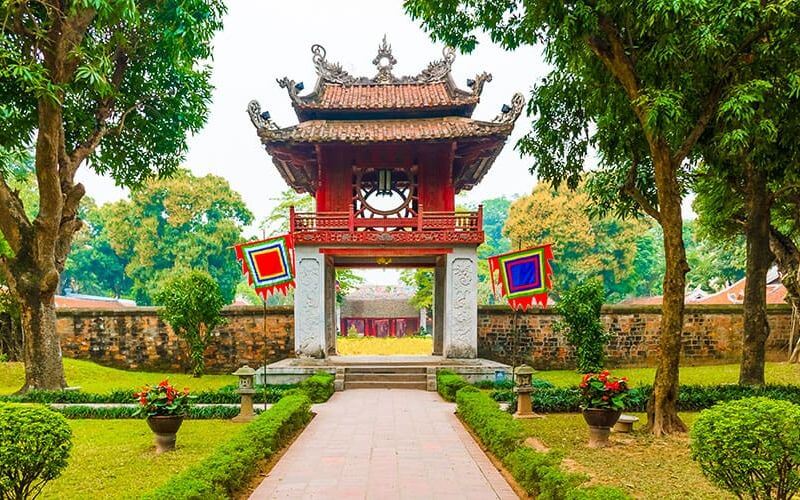
Temple Of Literature
Thang Long Imperial Citadel
Thang Long Imperial Citadel thrived under the Ly’s, Tran’s, and Le’s dynasties, becoming the center of power in Vietnam for 13 centuries. The exhibits here represent over 1000 years of the history of Vietnam, there are ceramics, cravings, tools, and many different crafts preserving the artistic and historical legacy of the nation. Through many wars in the history of Vietnam, the citadel was damaged and repaired but still kept its form just like it was. When coming to visit the Citadel, keep your eye open for the archeology field next to it on Hoang Dieu Street.
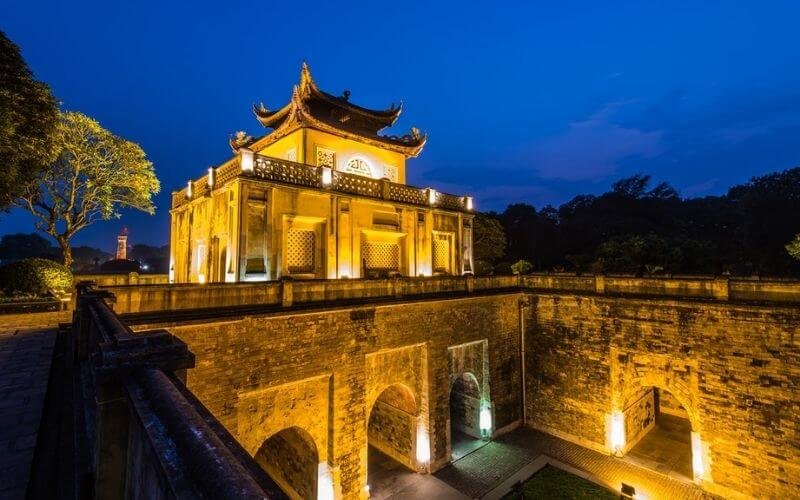
Thang Long Imperial Citadel
How to Get to the Presidential Palace from/and Nearby Attractions
Just 15 minutes away from the Old Quarters, you can easily reach the Palace using taxis, motorbikes, and buses or even walk there and enjoy the city’s beauty on the way.
Motorbike
Motorbike is the most popular vehicle in Vietnam. With small and narrow routes, traveling by motorbike is much more convenient and time-saving than using a car. You can book a ride on mobile apps, they are very easy to use and especially cheap. This is also a significant way to blend into the life of the locals. Engage in our Hanoi motorbike tour 1 day with visits to the above Hanoi attractions if you are interested in this means of transportation.
Buses
You can catch a bus to the nearby bus station, then walk in to explore the place by yourself. Another way is to buy a ticket and travel by Hanoi’s new double-decker bus. You will join other tourists and there will be a tour guide with you to go through lots of Hanoi’s top attractions. Learn about them while enjoying the ride.
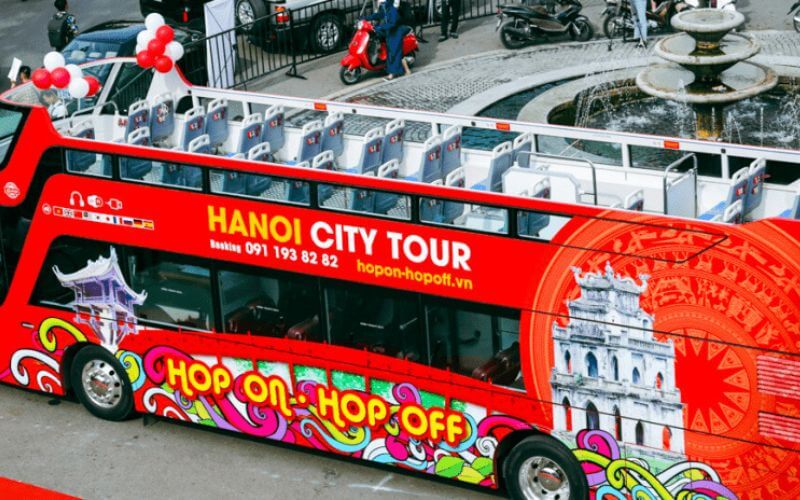
Hanoi Double Decker Bus
Private transports
For a more comfortable and private excursion, there are also bicycles and motors for rent, you can ask for them at your accommodation, they may have them available right away, or they will ask for a third party to provide them for you.
IDC Travel also offers private cars with a personal driver service, please contact us for more information.
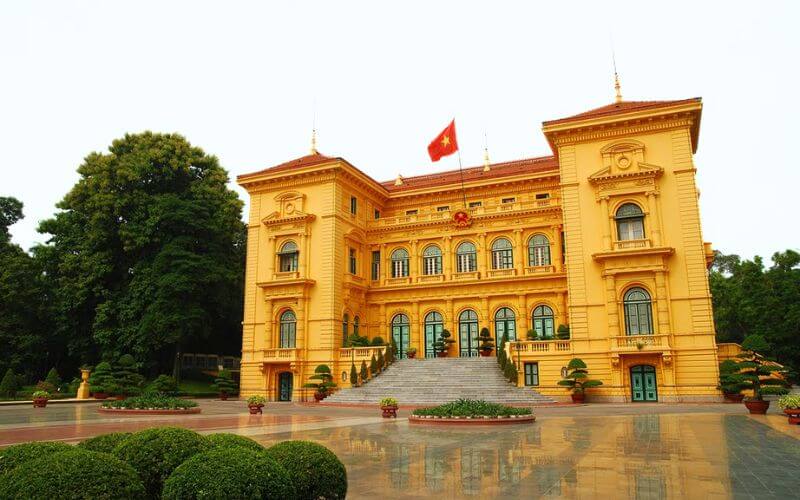
The Presidential Palace in Hanoi
Tourists are not allowed to get inside the palace. You can only witness it from the outside of the gate or stroll around it after paying a visit to Ho Chi Minh Mausoleum (As your visit to Ho Chi Minh Mausoleum Complex, you will visit Ho Chi Minh Mausoleum, the Presidential Palace, Ho Chi Minh’s Stilts House, One Pillar Pagoda, and finally Ho Chi Minh Mausoleum). Exploring this complex will take a lot of time, so travel lightly. Also, remember to dress politely as you are entering a solemn place.
